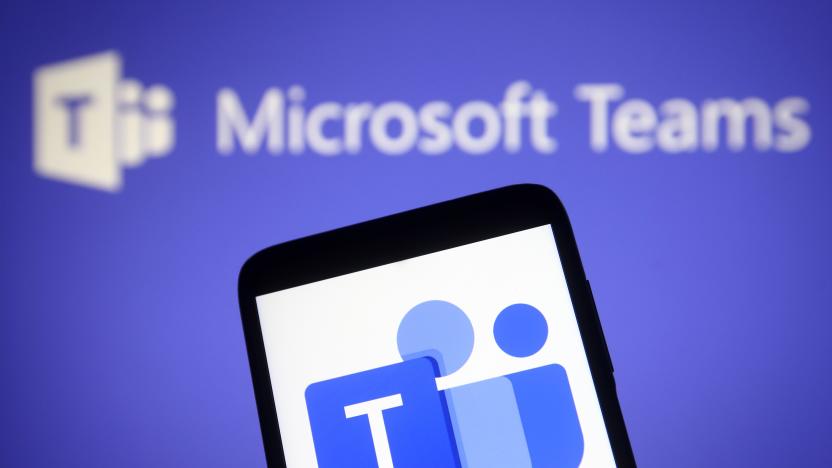plaintext
Latest

Microsoft Teams has been storing authentication tokens in plaintext
Microsoft's Teams stores auth tokens in unencrypted plaintext mode, allowing attackers to potentially control communications within an organization.

Google finally tightens access to saved passwords in Chrome
Having come under fire over its relaxed attitude towards saved passwords in Chrome earlier in the year, Google is finally looking to do something about it. In a post to his Google+ page, Chrome tinkerer François Beaufort notes that the company will now ask users to authenticate themselves using a system password before they can access saved credentials inside Chrome. Previously, users could access the list of saved passwords by pointing the browser at "chrome://settings/passwords," offering easy access should their computer be left unattended. As it stands, the feature appears limited to the latest Chromium build for Mac, mimicking the behavior of Apple's own web browser: Safari. While there's no word on whether Google intends to implement the feature inside Chrome for Windows, its inclusion on the Mac suggests it could be present inside a public release in the near future. [Image Credit: Francois Beaufort, Google+]

Note & Share for iOS: Markdown, Dropbox, Evernote, and more
With the tide of plain text editors showing up in the app store, I'm getting a little soggy, and I know you might be, too. However, I have another one for your consideration: Note & Share (for both iPhone and iPad) adds some unique features to the standard mix, primarily from the "Share" half of the name. First, like the recently-covered iPad app Edito, Note & Share supports Markdown and can render it for some of its output options, which include syncing the rendered HTML output to Evernote or sending it by email. The Evernote sync is of interest to me as an Evernote fan, but so is the Dropbox sync that it provides. Dropbox -- which is quickly taking the lead as the preferred method for both syncing and sharing -- works superbly for text files because, among other reasons, they end up fully-indexed in Spotlight on your Mac. Note & Share can also send to Twitter or Plurk and save to its own database. Of interest to Japanese users is its support for ATOK, a fast Japanese input method, to which it can send files and then retrieve them after editing. It also has a bookmarklet for Mobile Safari that will send a shortened URL to your document for linking. The app lacks the super-handy, extra Markdown toolbar of Edito, but its developers tell me that they're exploring the possibilities there. Beyond that, the Markdown support is great. The sharing options only show buttons if you have them enabled, so your interface only contains what you need, not a bunch of grayed-out options. At US$1.99, it looks like a great option for handling your iPad (and iPhone) text editing, especially if your notes need to go to more than one place. Give it a shot if you haven't already nailed down your editor of choice.

A quick roundup of iOS text editors with Dropbox support
This morning we received word from Jesse Grosjean at Hog Bay Software that his new app, PlainText (free, in-app purchase to remove ads), is now available on the App Store. It's one of several iOS text editors that feature support for Dropbox, so we thought a quick roundup of these apps was in order. If you're thinking about joining me for NaNoWriMo 2010 starting on November 1st, it's a good idea to think about what device(s) you'll be writing on and getting your writing software ready to roll as soon as you can. Text editors make excellent writing tools, since they're bare bones and don't get in the way of putting words onto "paper." First, let's take a look at PlainText (see screenshot above). Hog Bay Software is the same company that publishes the wonderful WriteRoom application for Mac and iPhone, which we've covered many times here on TUAW. Once PlainText is installed on your iPad (it also works on iPhone and iPod touch), you can tap the settings button to change Dropbox settings, turn on TextExpander support, or lock the screen orientation. Since I wanted to test several of these text editors with Dropbox but did not want to have a ton of new folders created in my Dropbox, I loved the fact that I could link to an existing folder. As soon as your Dropbox credentials have been verified, more settings become available. Most of those are related to when synchronization takes place. According to a note from Grosjean, there can be an issue when files are not saved on a computer using UTF-8 encoding. If a file is opened with PlainText and appears blank, the computer didn't save the file with the proper encoding. What's interesting is that I had this issue with another text editor app, and the developer of that app didn't seem to know what the problem was.

TaskPaper for iPhone, simplified to-do lists go mobile
TaskPaper, from the developer of WriteRoom, has been around for a while, and we've been talking about it since version 1.0. After what seems like a long wait, TaskPaper for iPhone is out. The super-simple to-do list with surprisingly robust capabilities is now mobile, and syncs with the desktop version (through Simpletext.ws) for a complete task management solution. The interesting aspect of TaskPaper is that it uses plain text files with minimal formatting to create and manage to-do lists. The file is easily read by other applications, and things such as tags and due dates are handled in a very human-readable format. The iPhone version offers the functionality of the desktop version, and the two work together quite well. Current users of TaskPaper on the desktop should note the format changes in TaskPaper files. TaskPaper costs $29.99US for the desktop version. At $4.99US, the iPhone version makes a great counterpart and a very useful addition to your productivity toolset.


